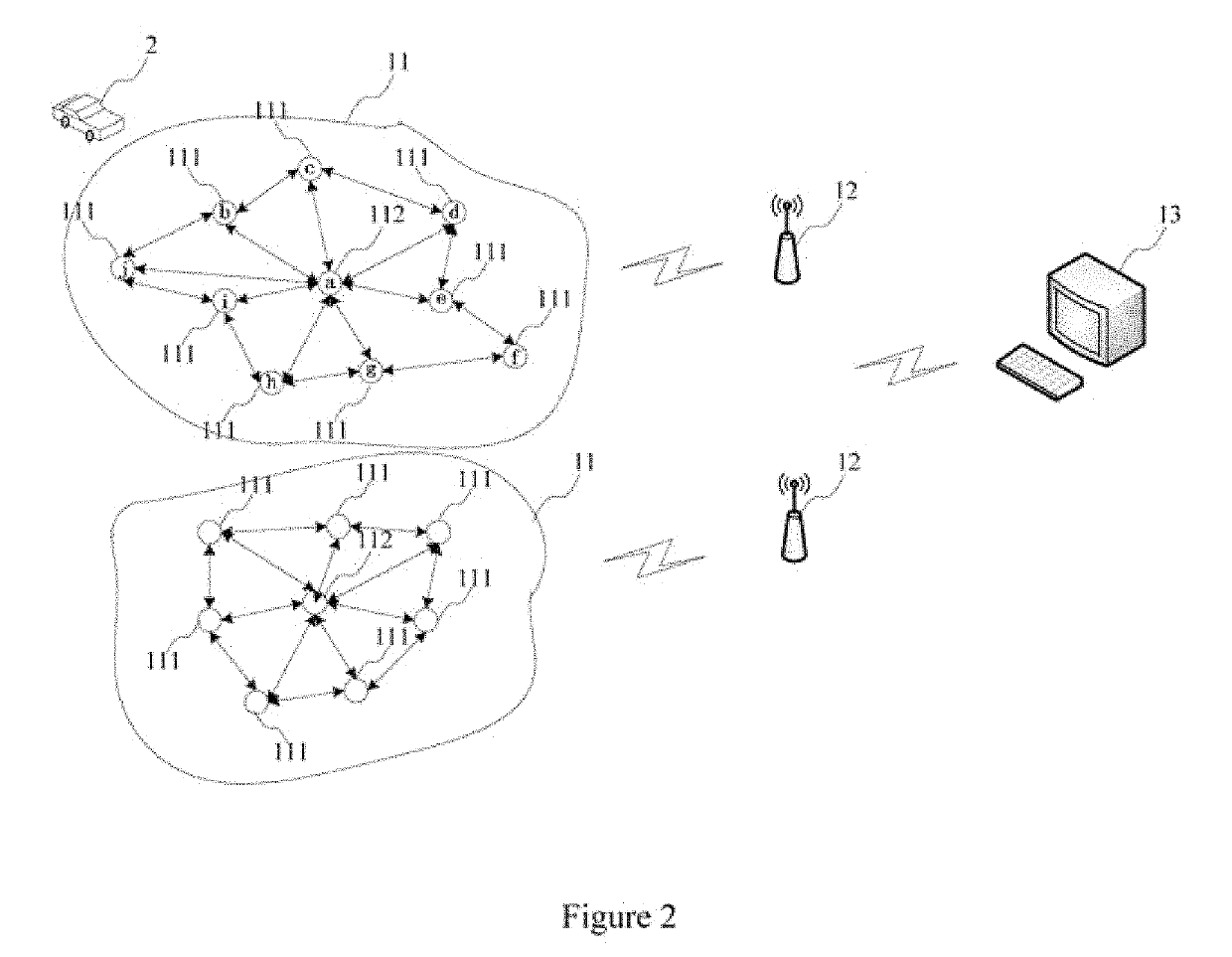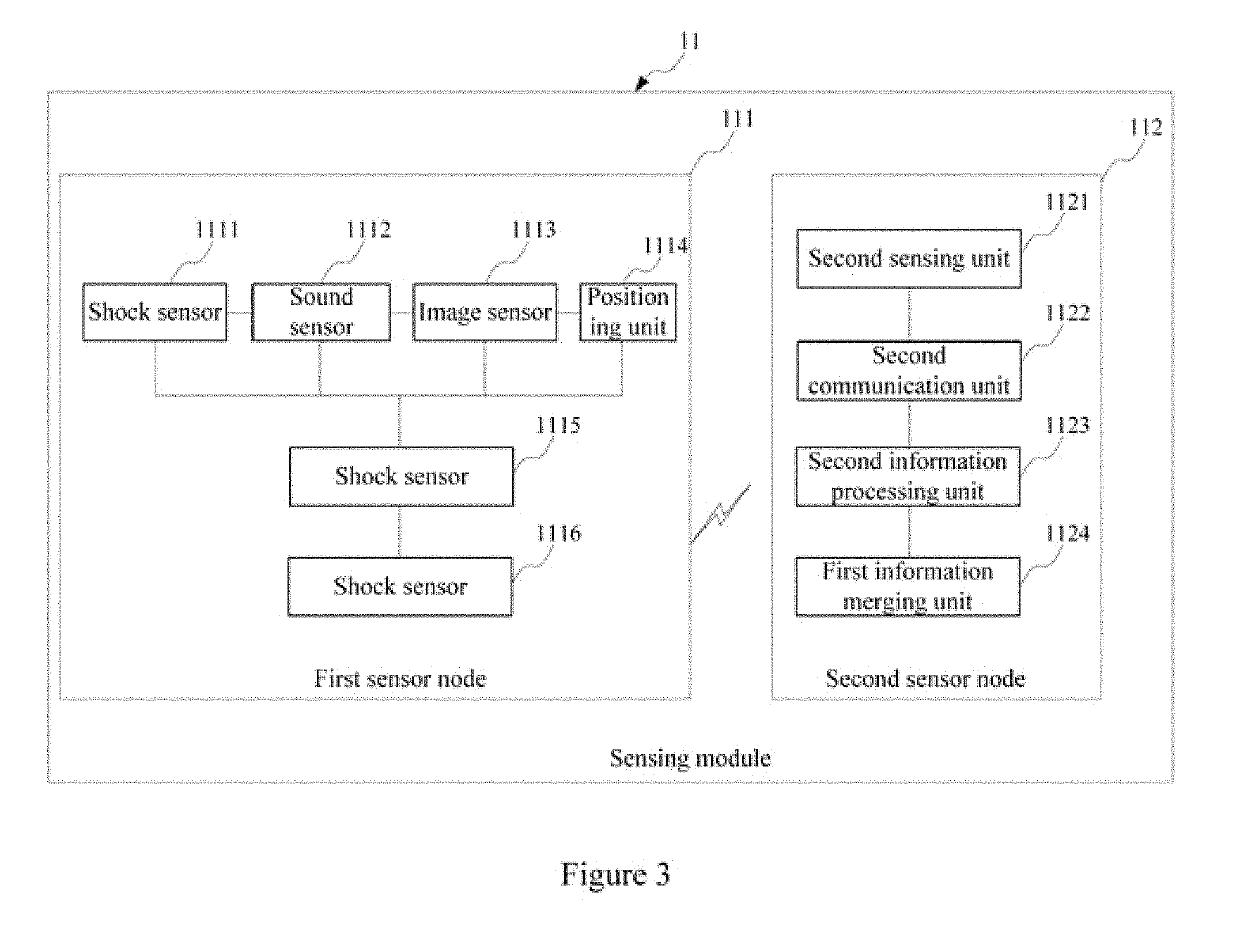Wireless sensor network architecture based on multifunctional and compound sensors
a sensor network and multi-functional technology, applied in the field of wireless sensor network architecture, can solve the problems of loss of a large amount of useful target information at sensor nodes, limited piece of target information obtained through single function nodes, and inconvenient bulk data transmission, so as to improve the survivability of wireless sensor networks, improve the reliability of communication between nodes within an area, and increase the confidence of advanced target information in upper level merging processing.
- Summary
- Abstract
- Description
- Claims
- Application Information
AI Technical Summary
Benefits of technology
Problems solved by technology
Method used
Image
Examples
embodiment
[0048]The present embodiment provides a wireless sensor network architecture 1 based on multifunctional and compound sensors for monitoring a moving target 2. The number of the moving target may be one or more. For example, the moving target may be a person, a vehicle and the like, and in this embodiment, a vehicle is taken as the moving target. As described in the embodiment, referring to FIGS. 1 and 2, there is a diagram of principle structure and a schematic view of an actual application of a wireless sensor network architecture based on multifunctional and compound sensors, wherein the wireless sensor network architecture 1 based on multifunctional and compound sensors comprises several sensing modules 11, a relay transmission module 12, a control module 13 and a power conservation management module 14.
[0049]In the embodiment, the number of the sensing modules 11 is two, and the sensing modules 11 comprise a plurality of first sensor nodes 111 and a second sensor node 112, the p...
PUM
 Login to View More
Login to View More Abstract
Description
Claims
Application Information
 Login to View More
Login to View More - R&D
- Intellectual Property
- Life Sciences
- Materials
- Tech Scout
- Unparalleled Data Quality
- Higher Quality Content
- 60% Fewer Hallucinations
Browse by: Latest US Patents, China's latest patents, Technical Efficacy Thesaurus, Application Domain, Technology Topic, Popular Technical Reports.
© 2025 PatSnap. All rights reserved.Legal|Privacy policy|Modern Slavery Act Transparency Statement|Sitemap|About US| Contact US: help@patsnap.com



